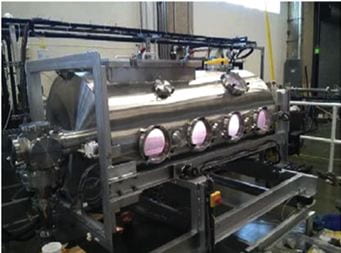
It has been recognized both by NASA (2018 Strategic Plan) and the National Academy of Sciences (2019 Search for Life report) that the future of space exploration will require challenging missions to nearby planets and moons. Such missions will involve high-speed aircraft atmospheric entries, which become increasingly technical in thick atmospheres, such as the atmospheres of gas giants, due to the resulting extreme heating of the spacecraft. This motivates the desire to develop and test the next generation of heat shields that can protect spacecrafts during such ambitious entries. To address this problem of high significance to the U.S. goals in space exploration, we collaborate with Dr. Dmitri Orlov and Dr. Igor Bykov from University of California San Diego in a project where we study what happens to aircraft heat shield materials when exposed to extreme conditions.
 We aim to reproduce the processes occurring during spacecraft atmospheric entries by exposing material targets to the plasma environment of the DIII-D National Fusion Facility in San Diego and the IPG6-B inductive plasma generator in the CASPER lab (figure on the left). DIII-D experiments can reproduce the high heat environments encountered in some of the most ambitious missions ever attempted, such as the Galileo probe, which entered Jupiter’s atmosphere with a speed of almost 50 km/s. Instead of accelerating test materials to such extreme speeds, we recognized that the DIII-D tokamak plasma itself rotates with comparable speed, which means that any object launched radially from the wall of the tokamak incurs motion relative to the plasma which is comparable to the entry speed of Galileo.
We aim to reproduce the processes occurring during spacecraft atmospheric entries by exposing material targets to the plasma environment of the DIII-D National Fusion Facility in San Diego and the IPG6-B inductive plasma generator in the CASPER lab (figure on the left). DIII-D experiments can reproduce the high heat environments encountered in some of the most ambitious missions ever attempted, such as the Galileo probe, which entered Jupiter’s atmosphere with a speed of almost 50 km/s. Instead of accelerating test materials to such extreme speeds, we recognized that the DIII-D tokamak plasma itself rotates with comparable speed, which means that any object launched radially from the wall of the tokamak incurs motion relative to the plasma which is comparable to the entry speed of Galileo.

